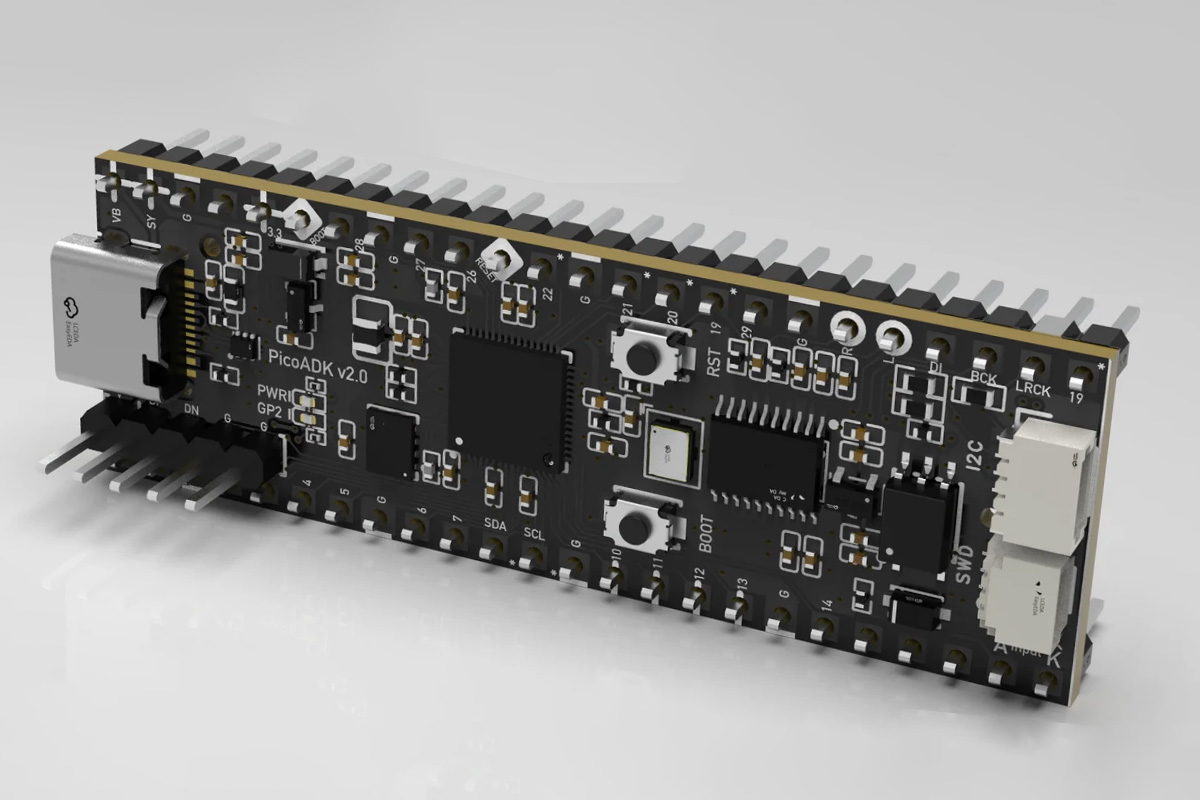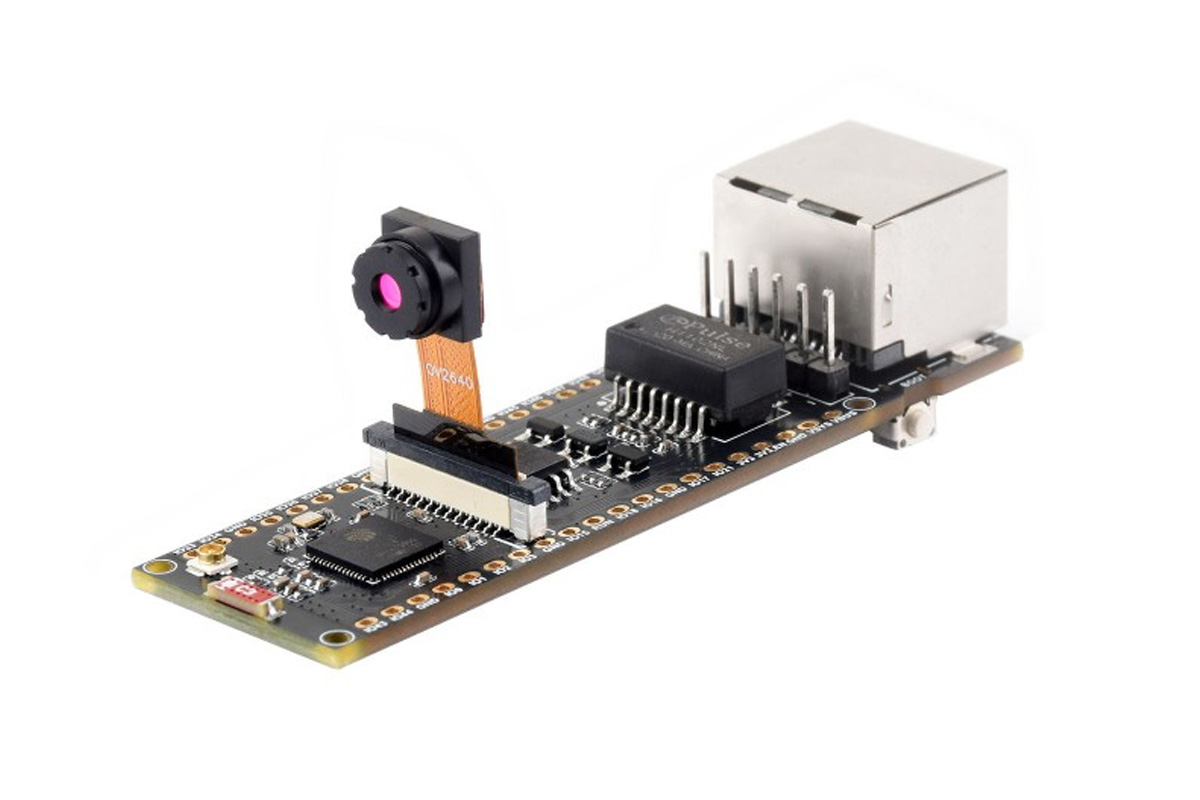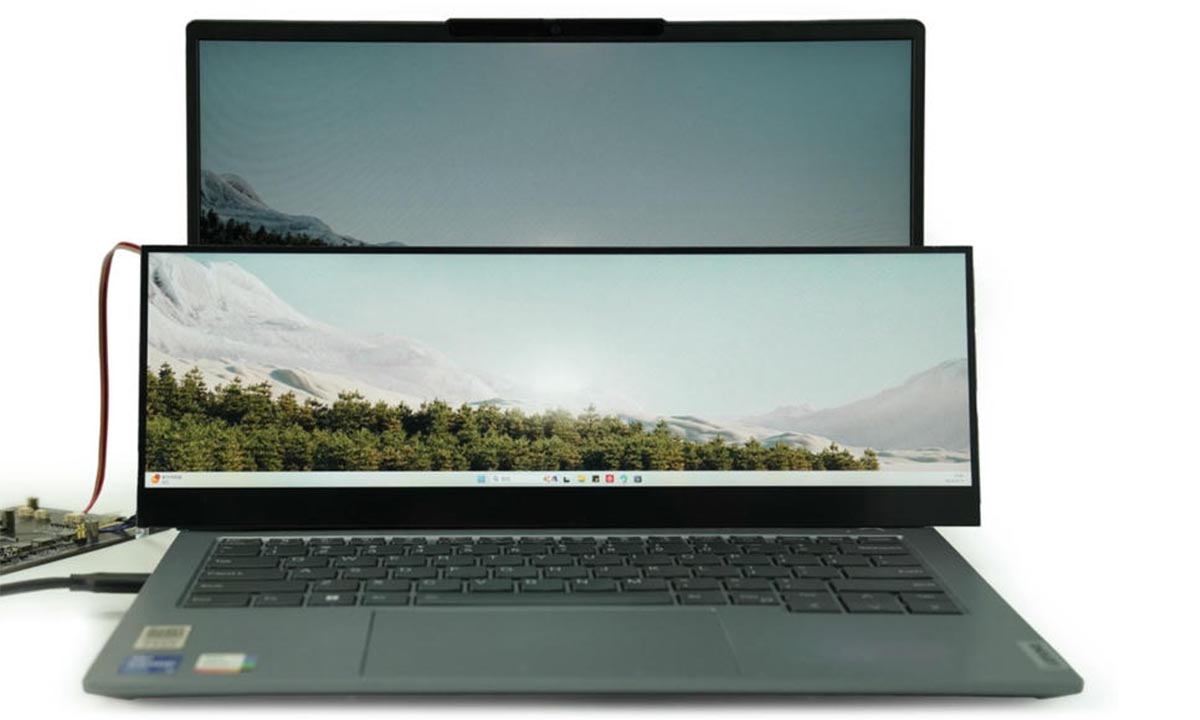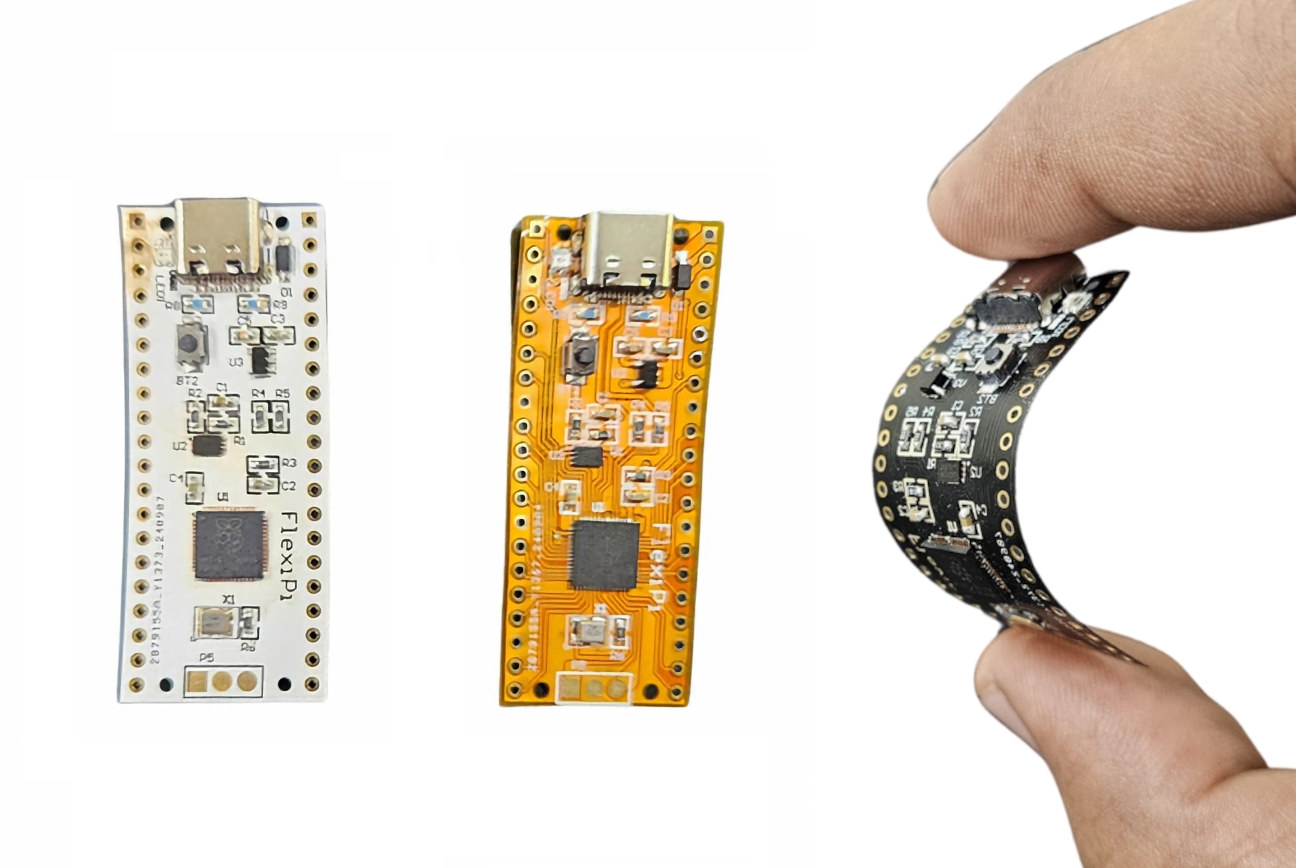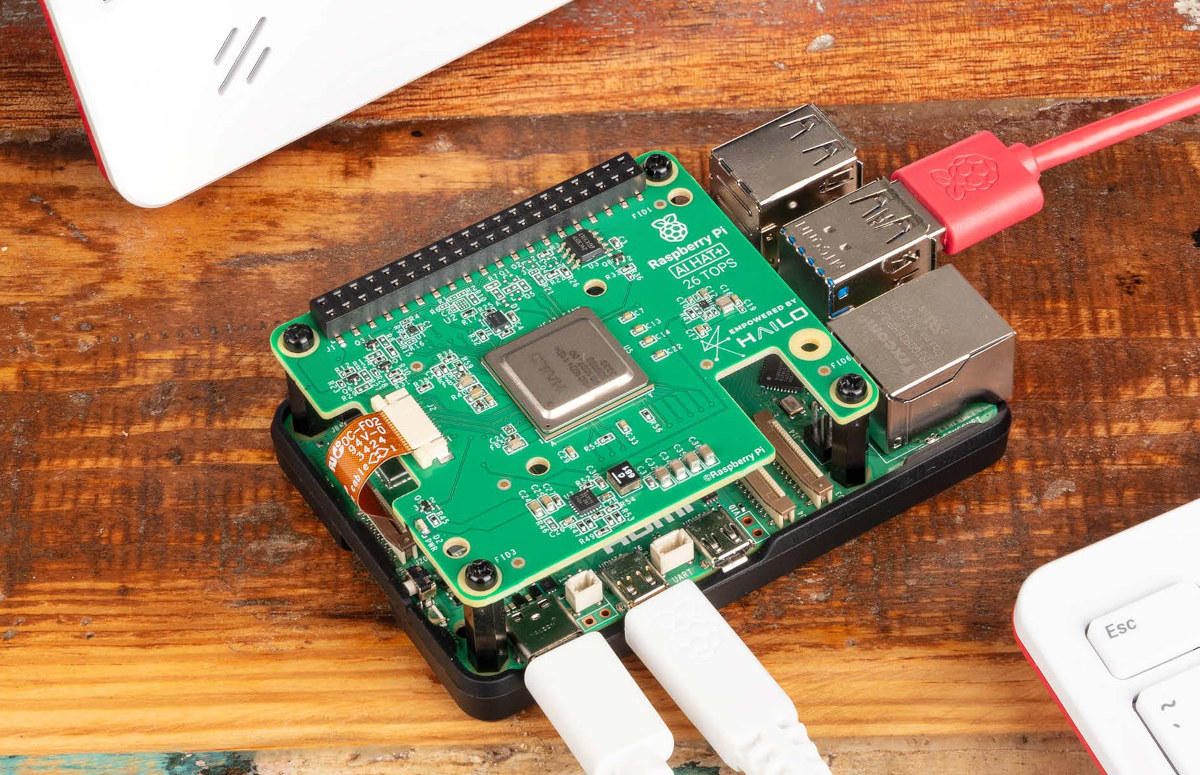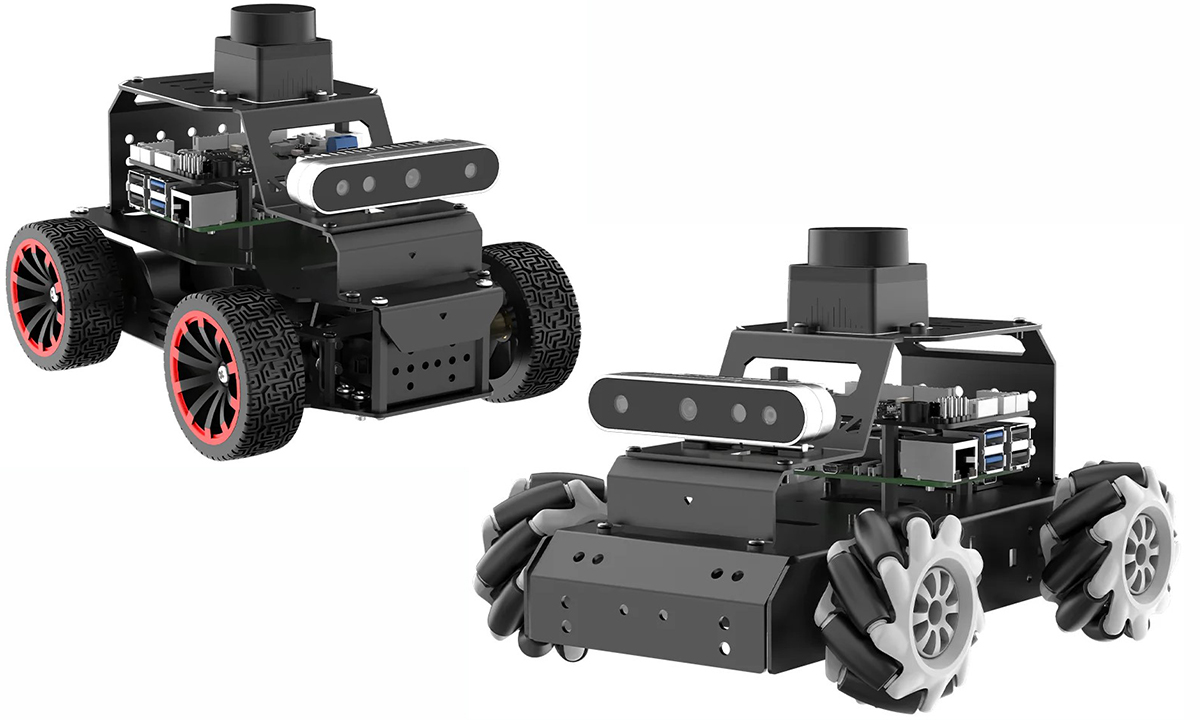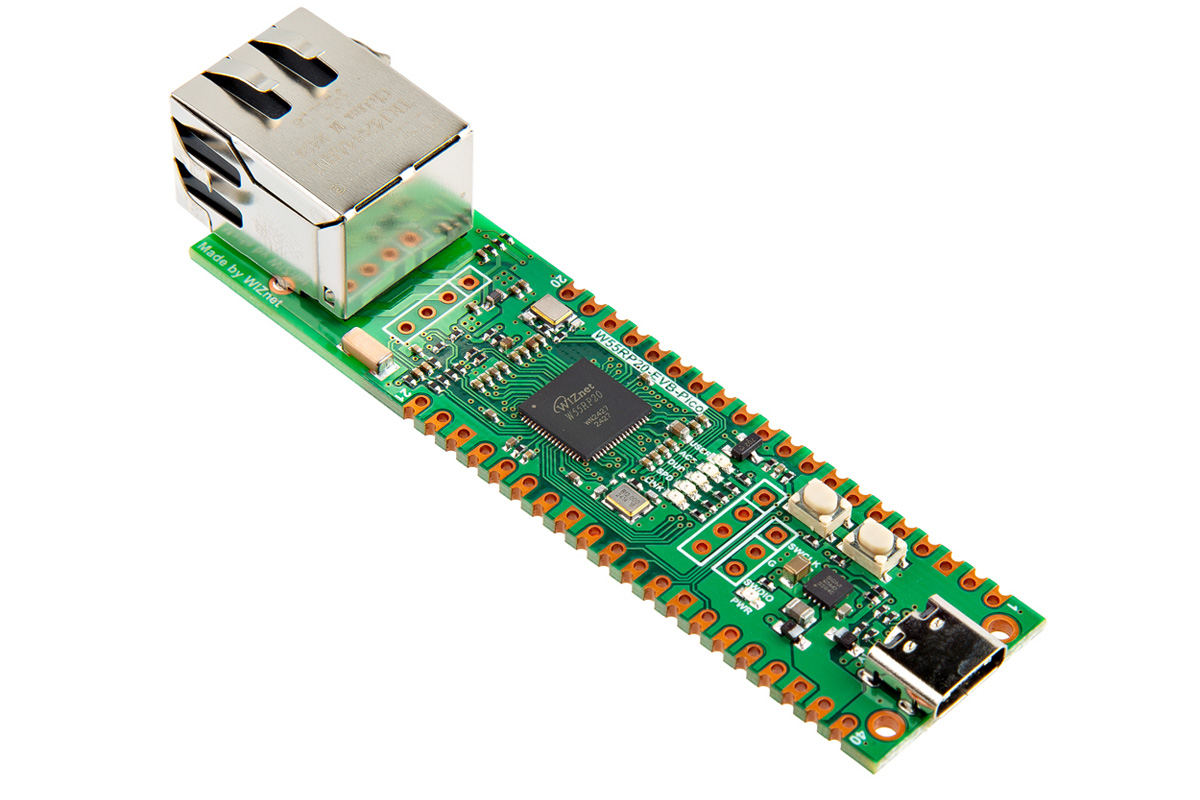After the success of PicoADK v1, Datanoise has recently announced the launch of its PicoADK v2 music synthesizer built around the Raspberry Pi RP2350 MCU. The board supports projects like custom synthesizers, audio effects, and noise generation, and the 8 MB QSPI PSRAM of the RP2350 makes it ideal for memory-intensive applications such as long delays. Additionally, it features a SWD debug port, microSD card support, a MIDI-in circuit with an optocoupler, USB Type-C, user and power LEDs, and more. Previously, we have written about various similar synthesizer boards, like the Arduino-based MIDI controller, and we have seen products like the TinyLlama x86 retro computer, which uses the Raspberry Pi Zero 2 W as a MIDI synthesizer. PicoADK v2 music synthesizer specification Microcontroller – Raspberry Pi RP2350A MCU CPU – Dual-core Arm Cortex-M33 processor @ 150MHz Memory – 520KB internal RAM Storage – 8KB OTP Package – QFN-60; 7×7 mm Memory – Optional 8MB QSPI […]
Waveshare ESP32-S3 ETH board provides Ethernet and camera connectors, supports Raspberry Pi Pico HATs
Waveshare has recently launched the ESP32-S3-ETH development board with an Ethernet RJ45 jack, a camera interface, and compatibility with Raspberry Pi Pico HAT expansion boards. This board includes a microSD card interface and supports OV2640 and OV5640 camera modules. Additionally, it offers an optional Power over Ethernet (PoE) module, making it ideal for applications such as smart home projects, AI-enhanced computer vision, and image acquisition. Previously, we have written about LILYGO T-ETH-Lite, an ESP32-S3 board with Ethernet and optional PoE support. We have also written about LuckFox Pico Pro and Pico Max, Rockchip RV1106-powered development boards with 10/100M Ethernet and camera support. The ESP32-S3-ETH board is like a combination of those two, where you get an ESP32-S3 microcontroller, Ethernet (with optional PoE), and a camera interface. ESP32-S3 ETH development board specifications: Wireless module ESP32-S3R8 MCU – ESP32-S3 dual-core LX7 microprocessor @ up to 240 MHz with Vector extension for machine learning Memory – 8MB PSRAM Storage […]
14-Inch 4K ultra-wide touch display is optimized for Raspberry Pi and LattePanda boards, features USB Type-C and HDMI interfaces
DFRobot’s 14-inch ultra-wide IPS display offers narrow bezels, 4K (3840 x 1100) resolution, 10-point capacitive touch, and is designed for mounting single board computers such as LattePanda Sigma and Raspberry Pi 5. It can also be connected to other computers with dual USB Type-C and mini HDMI video input interfaces. With a unique 3.5:1 bar-shaped aspect ratio, this display can present information in an intuitive format for countertop advertising screens, measurement equipment, and smart terminals. DFRobot’s “14-inch 4K IPS bar touch display” specifications Display 14-inch ultra-wide, narrow bezel IPS bar touch display with 4K (3840×1100) resolution Ten-point capacitive touch support, offering precise input Aspect ratio – 3.5:1 Pixel – 0.08964(H) × 0.08964(V) mm Viewable area – 344.2(H)×98.6(V) mm with 170° viewing angle and ≥6H surface hardness Color Gamut – 72% Brightness – 300 cd/m2 Contrast Ratio – 1200:1 Refresh rate – 60Hz Transmittance – Greater than equals to 86% Driver […]
RP2040 FlexiBoard is a bendable Raspberry Pi Pico clone made of flexible PCB (Crowdfunding)
[Update December 22: The project was previously called FlexiPi, but Raspberry Pi considered it infringed on its trademarks, so the name was changed to RP2040 FlexiBoard instead]. RP2040 FlexiBoard is a bendable Raspberry Pi RP2040 board made of flexible PCB with the same layout as the original Raspberry Pi Pico, but featuring a USB-C port instead of a micro USB port on the official board. This follows the Flexduino flex PCB clone of the Arduino UNO made by “EDISON SCIENCE CORNER”, but the smaller design of “TOP Gadgets” RP2040 FlexiBoard may make it potentially more useful since it could be inserted into tight or round enclosures. RP2040 FlexiBoard specifications: MCU – Raspberry Pi RP2040 dual-core Cortex-M0+ microcontroller @ 48 MHz (overclockable to 133 MHz) with 264KB SRAM Storage – 2MB QSPI flash USB – 1x USB Type-C 1.1 port used for power and programming Expansion 2x 20-pin 2.54mm pitch header […]
Raspberry Pi AI HAT+ features Hailo-8L or Hailo-8 AI accelerator with up to 26 TOPS of performance
The Raspberry Pi AI HAT+ is a PCIe expansion board for the Raspberry Pi 5 with either a 13 TOPS Hailo-8L or 26 TOPS Hailo-8 AI accelerator. You may remember the Raspberry Pi AI Kit was introduced last June with an official M.2 Key M HAT+ and a 13 TOPS Hailo-8L M.2 AI accelerator module, The new Raspberry Pi AI HAT+ is quite similar except the chip is soldered on the expansion board and offered with either Hailo-8L or the more powerful Hailo-8 variant. Raspberry Pi AI HAT+ specifications: Supported SBC – Raspberry Pi 5 AI accelerator Hailo-8L AI accelerator with up to 13 TOPS of performance Hailo-8 AI accelerator with up to 26 TOPS of performance Host Interface – PCIe Gen3 interface 16mm stacking GPIO header PCIe FPC cable Spacers and screws enabling fitting on Raspberry Pi 5 with Raspberry Pi Active Cooler Dimensions – 65 x 56.5 mm […]
MentorPi is a ROS2-compatible, Raspberry Pi 5-based robot car with Mecanum or Ackermann chassis
MentorPi is a ROS2-compatible robot car powered by the Raspberry Pi 5, designed for AI-driven robotics and Python programming. It offers two chassis options: MentorPi-M1, which features a Mecanum-wheel chassis, and MentorPi-A1, equipped with an Ackermann chassis. Both variants come with high-performance components such as closed-loop encoder motors, STL-19P TOF lidar, 3D depth cameras, and high-torque servos. These enable precise navigation, SLAM mapping, path planning, and dynamic obstacle avoidance, making MentorPi an ideal platform for robotics tasks. The system utilizes a dual-controller architecture to optimize performance. The Raspberry Pi 5 handles AI vision processing and strategic functions, while Hiwonder’s RRC Lite expansion board manages motion control and sensor data processing. This task distribution enhances efficiency in machine vision, AI-powered navigation, and robotic control, allowing MentorPi to tackle complex AI and vision-based applications with ease. MentorPi also supports advanced features like 3D visual mapping and YOLOv5-based object detection for recognizing road […]
PCBWay’s 7th project design contest – Win prizes for your electronic, mechanical, or STM32 project (Sponsored)
PCBWay has launched its 7th project design contest in collaboration with Mouser with three categories, namely electronic project, mechanical project, and STM32 project. PCBWay’s design contests aim to encourage participants to engage in open-source innovation projects and inspire more people to join the electronics community. This year’s contest is no different and even adds the new STM32 project category to attract even more entrants. There are three phases in PCBWay’s 7th design contest: Project Release – September 2, 2024 – January 19, 2025 Project Review – January 20, 2024 – February 28, 2025 Result Announcement – March 10, 2025 The contest started last month, but you still have plenty of time to enter before January 19, 2025. As noted in the introduction three categories are available. Here are a few more details about these: Electronic project – Everything about electronic design, from simple circuits to advanced MCU and IoT projects, […]
Wiznet W55RP20-EVB-Pico board features W55RP20 SiP with W5500 Ethernet controller and RP2040 MCU
Wiznet has recently released the W55RP20-EVB-Pico dev board, a compact board based around the W55RP20 SiP that fuses the Raspberry Pi RP2040 MCU and the W5500 Ethernet controller into a single IC, plus a 2MB flash chip for firmware storage. Just last month we wrote about W5100S-EVB-Pico2 and W5500-EVB-Pico2 dev boards, both the boards have a newer Raspberry Pi RP2350 MCU and external Ethernet controller (W5500 or W5100S). The RP2350 offers additional security features such as One Time Programmable (OTP) memory, secure boot, and Arm TrustZone technology, making it more suitable for secure applications. The W55RP20 on the other hand integrates a W5500 Ethernet controller and the RP2040 in a single SiP which is also pin-compatible with the Raspberry Pi Pico, making it easy to use existing Pico accessories and code examples. W55RP20-EVB-Pico dev board specifications: SiP– W55RP20 microcontroller MCU – Raspberry Pi RP2040 Core– Dual Cortex M0+ cores up […]


